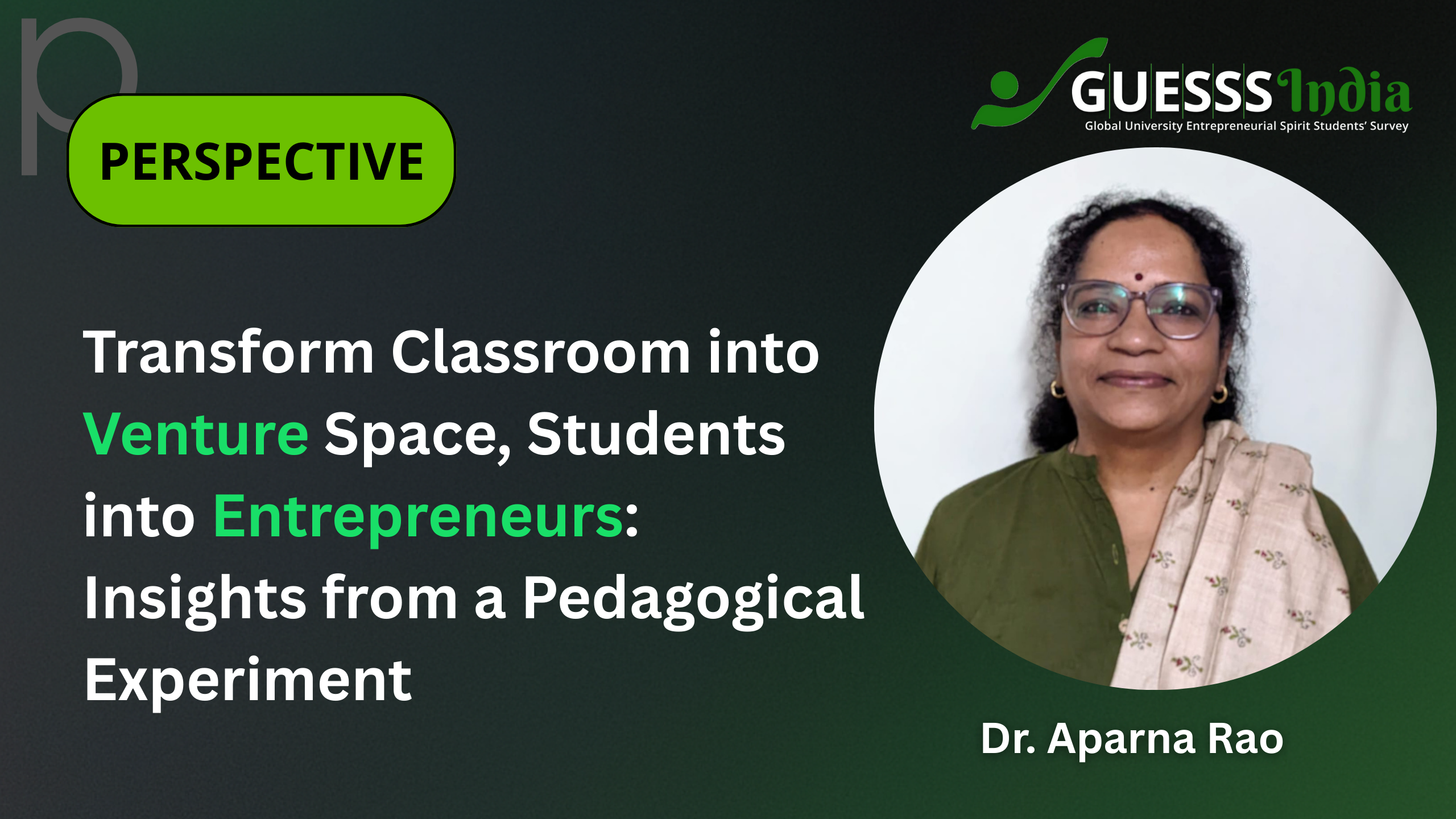The timeless question continues – Is entrepreneurship inborn or acquired? Reflecting on this, I share my learning from an experiment I conducted about a decade ago with three batches of MBA students, covering over 1000 students.
This pedagogical experiment required the students to read the book titled ‘The Story of My Experiments with Truth’ by Mahatma Gandhi, make a short class presentation, and then sell the book. That is right. They had to sell the copies of the book out there in the market.
Of course the students were surprised. They had to understand the product. So they read the book and presented what they learnt. The students discussed Gandhian ideas, methods, beliefs, and values. One of the discussions also extended to debating the leadership styles of Adolf Hitler versus Gandhiji. The classroom was abuzz with intellectual discussions.
But the most important question that lingered was: How are we going to sell the book? Most students had not read the book before, and many did not believe in or understand the ideas in the book. Regardless, the students were pushed towards the first principle of Entrepreneurs’ Manifesto – ‘Get out of the building.’ Hesitantly, they left the building, doubting the exercise but incentivized by marks and also by the fact that they get to keep the money from the book sale.
The experiment raised the eyebrows of fellow faculty colleagues given the expectations of fieldwork and sales that students were required to do. However, the institute leadership extended full support, and gradually other stakeholders became more open to the experiment and began to see the merit of it.
The students were given clear deliverables. A batch of 360 was divided into sections comprised of 60 students each. Every section was regarded as a business unit. They were required to primarily sell the book. Every student had a target of ten books per week for three weeks, with half a day assigned especially for the fieldwork. The students worked out different roles among themselves. They had to coordinate with the supplier of books—Bombay Sarvoday Mandal. They had to ensure availability of stock, plan logistics and supply chain, keep financial records, monitor team performance, plan and execute business development, etc.
This experiment put the students through a real business experience. They learnt business by doing it. The criticism from non-believers of Gandhi taught them to stand firm on the business despite challenges. The emotional dilemmas of handling the team and managing the performance of fellow classmates built character in them. It also triggered a sense of adventure among the students, as some took the initiative to source a wider product range related to Gandhian values, trying to practice the concept of ‘bundling’.
The outcomes were nothing short of spectacular. 10000 copies of the book were sold that month. In fact, the vendor had to print additional copies to meet the demand. Students were enthused throughout the experiment. Very soon, media coverage followed. Positive words in the notable newspapers and citations for the institution from Bombay Sarvoday Mandal helped bring acceptance from faculty colleagues over time. Relatively, students were least resistant and most interested.
This experimental project that we called ‘Jagruti’ yielded tremendous results in terms of student learning and entrepreneurial self-efficacy. What made the experiment special was the end-to-end student ownership, ranging from team name, logo, social media presence, outreach, exhibitions, and direct sales. The students were exposed to various business functions, including marketing, sales, finance, supply chain, and consumer behavior. For many students, this experiment shaped their entrepreneurial thinking and business acumen. It boosted students’ confidence and also added to their professional CV also helping students score solid internship offers from some large MNCs. The students invariably said, “This is what a real MBA should do,” “Expose us to real-world problems,” “Working for a bigger purpose (beyond marks and money) is fulfilling and much more fun than working for work’s sake,” and “This experience will live with me forever.”
In the following two years, I repeated the experiment with incoming batches. The very first cohort of students had formed a Facebook page for this experiment that invited a lot of engagement. The senior batch extended support to the incoming batch, providing advisory and mentoring to the new student teams. The initial hesitation and reluctance to explore field sales was overcome after the experience sharing by some of the senior students.
Several students from these batches have chosen and are walking the path of entrepreneurship. Even today, when these students connect with me, project ‘Jagruti’ comes up in the conversation without fail. This kind of connection with a class project – hand, head and heart, could be achieved only through the conviction that experience is the best teacher, and that entrepreneurial thinking and mindset can be developed through experiential methods.
My reflections from these years tell me that entrepreneurship can indeed be nurtured through hands-on learning. I invite the entrepreneurship educators across the country to transform classrooms into venture grounds, theoretical knowledge into real-world skills, and students into entrepreneurs!


